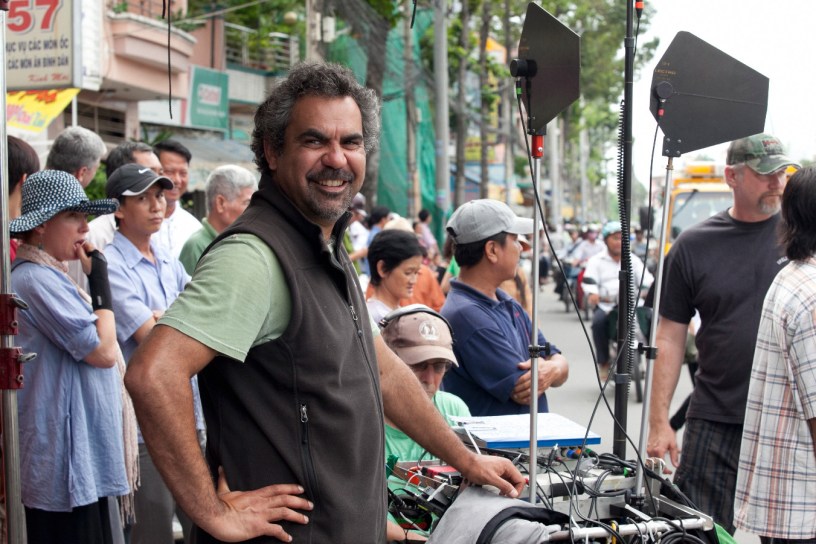Wayne Blair on the set of ‘The Sapphires’ in Vietnam.
It used to be that investing in Australian films was a sure way to lose money. Our films were sweet but not ambitious, made for the home entertainment window rather than cinema. They just weren’t big nor bold enough.
With the extraordinary success of Lion last year (58 international and local awards) and Ladies in Black currently blazing the box office (who hasn’t seen this hilarious and beautiful re-imagining of David Jones in the young Australia of the 1950s?) things are changing. Our natural advantages (brilliant creatives, beautiful locations) are finally offsetting our natural disadvantages (distance, small domestic market) and we’re now on the world stage. The success of our Indigenous film-makers and the stories they tell provides compelling evidence. The Sapphires, based on the real life story of the Aussie Supremes, an all-female Indigenous singing group, was the 2012 international hit for Aussies, winning no less than 26 international and Australian awards, including several for best direction by Wayne Blair.

Which brings me to where I think Australian filmmaking is going. Several years ago the government moved away from a predominantly direct funding/grants model to a tax offset model. As a result filmmakers were encouraged to take a more commercial approach as funds now came from commercial partners rather than the taxpayer. This has been wildly successful – commercial partners are attracted to the 40 per cent Producer Offset (or 20 per cent in the case of television) but only come on board if they judge the film to have a good chance of commercial traction. As a result, Aussie filmmakers have honed their audience-pleasing nous to a fine, sharp point.
I expect the next part of the evolution will be to encourage a broader range of investors into Australian storytelling through film and video. Such encouragement will come via two global funding trends – crowd funded innovation and social philanthropy. These approaches can be achieved quite easily – through new technology platforms like Pozible, Indiegogo and Kickstarter and a tweaked approach to tax deductibility. For example, investing in Australian content could be treated the same way as angel investing in early stage companies, considered risky but good for building innovation into the economy and therefore encouraged under our tax laws. This would embolden investors and enable our creative sector to meet new needs of the changing world. We need bigger and bolder forms of escapism, as subscription video on demand shows us dragons/zombies/romance plus production dollars = success. We also need to embrace the new markets opening up, both geographic (China, regional Australia) and demographic (older women).
On a personal note this year I’ve invested in a film for the first time: I am Woman, a bio-pic of Helen Reddy, telling the story of an Aussie girl who won a competition, became a Beyonce-scale superstar and gave the 1970s ‘Women’s Liberation’ movement their iconic anthem.

While the film aligns with my personal values, my modest investment can’t be described as social philanthropy because I expect it to find an international audience and be a commercial success. Not only is the subject matter on point (gender politics are front of mind in the US and Australia currently) but the producing team behind the project is Goalpost Pictures who did such a sterling job with The Sapphires. The music is great (Delta Dawn…what’s that flower you’ve got on?!) and the lead actors are inspired choices, including the young Adelaide talent, Tilda Cobham-Hervey, who is wowing alongside Dev Patel in Hotel Mumbai currently. See the likeness?
Investing in film is undoubtedly risky but as our screen industry gets better and as external forces create more demand for what we produce, Australia is in an excellent place to take advantage. Thoughtful policy-making and investors willing to explore new forms of social philanthropy are what’s needed for us to optimise these opportunities.
Megan Brownlow is a partner and national industry leader for Technology, Media and Telecommunications, PwC Australia. This piece has been republished with permission from LinkedIn.


